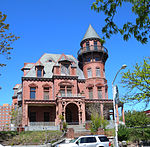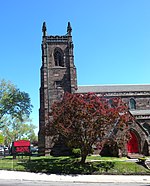American History High School
American History High School is a magnet public high school in the University Heights neighborhood of Newark, in Essex County, New Jersey, United States, operating since its establishment in 2006 as part of the Newark Public Schools. Operating together with the Gilder Lehrman Institute of American History, the New Jersey Historical Society and Rutgers–Newark, American History High School's magnet program is designed to take advantage of the city's place in American history and its access to academic, cultural and civic resources as part of a college preparatory curriculum designed to assist students in understanding local, state and national history and preparing each student to attend college.As of the 2021–22 school year, the school had an enrollment of 432 students and 41.0 classroom teachers (on an FTE basis), for a student–teacher ratio of 10.5:1. There were 340 students (78.7% of enrollment) eligible for free lunch and 38 (8.8% of students) eligible for reduced-cost lunch.
Excerpt from the Wikipedia article American History High School (License: CC BY-SA 3.0, Authors).American History High School
Montgomery Street, Newark
Geographical coordinates (GPS) Address Nearby Places Show on map
Geographical coordinates (GPS)
| Latitude | Longitude |
|---|---|
| N 40.730201 ° | E -74.186889 ° |
Address
Montgomery Street 89
07103 Newark
New Jersey, United States
Open on Google Maps




